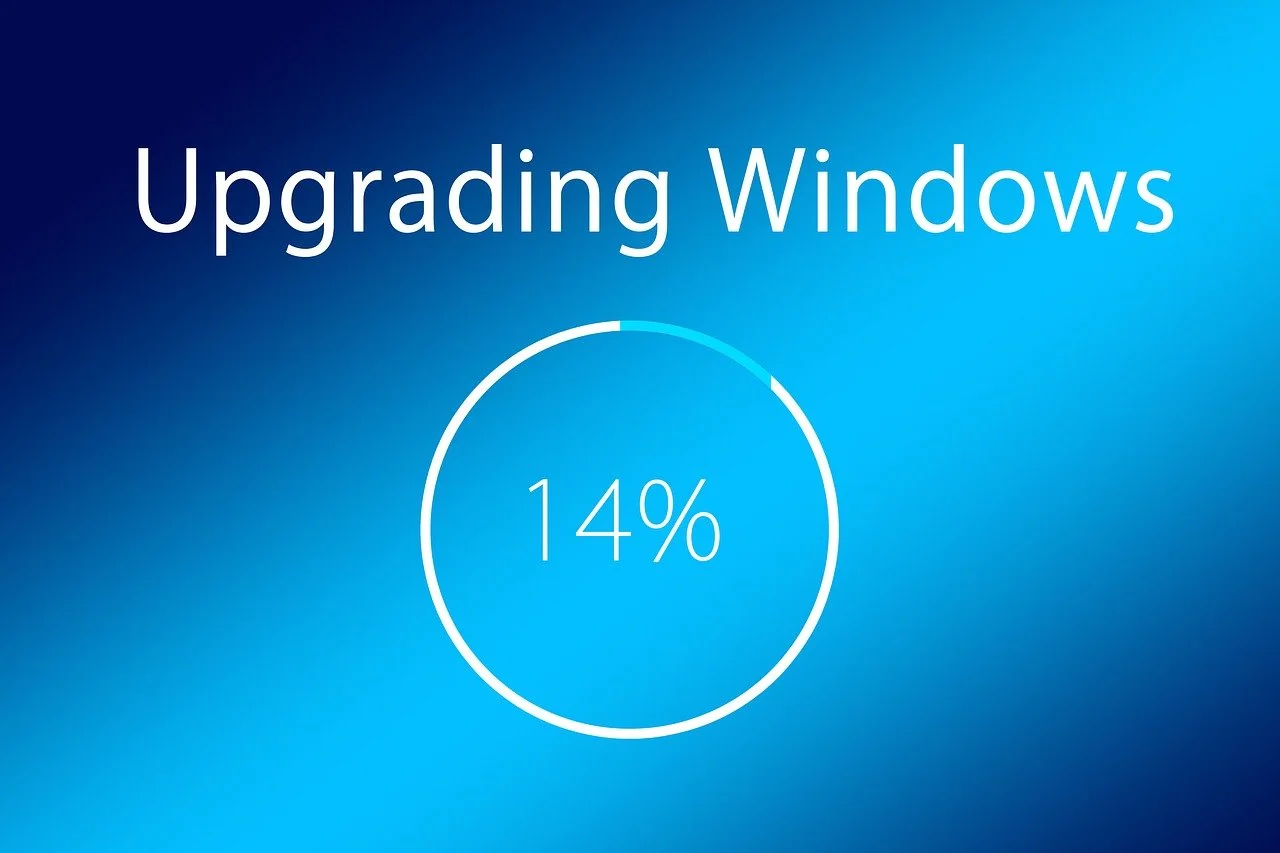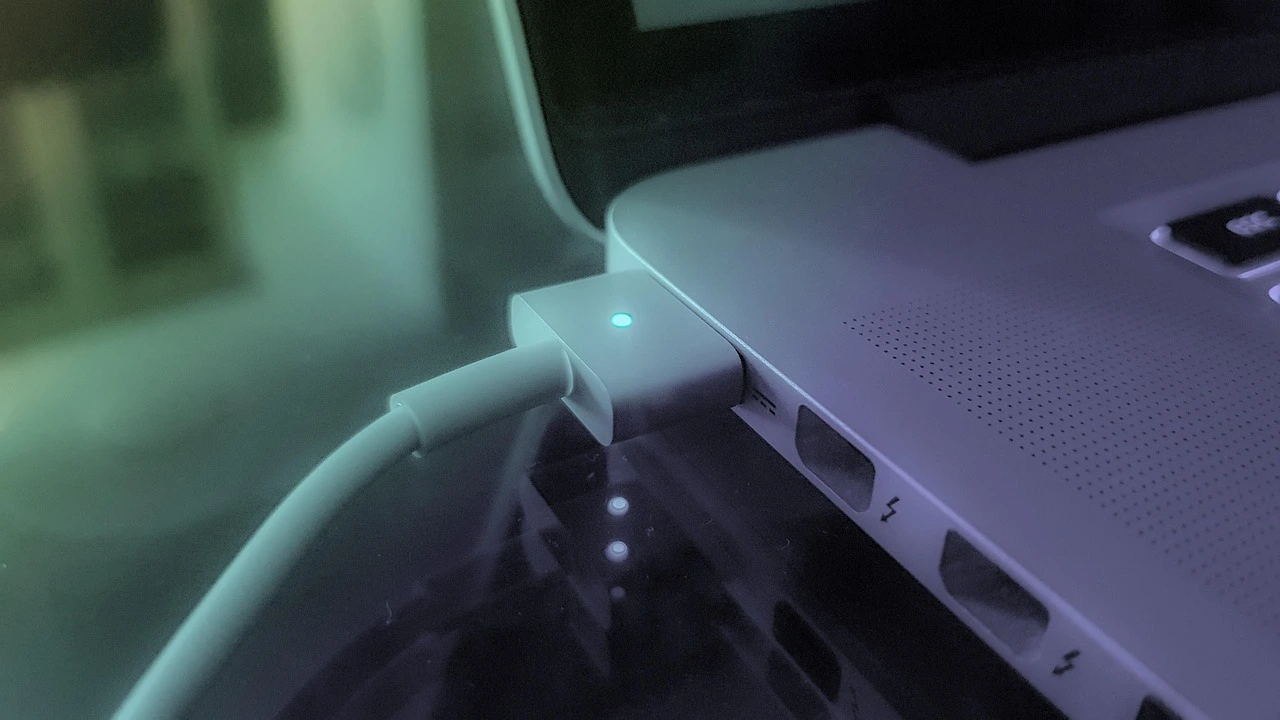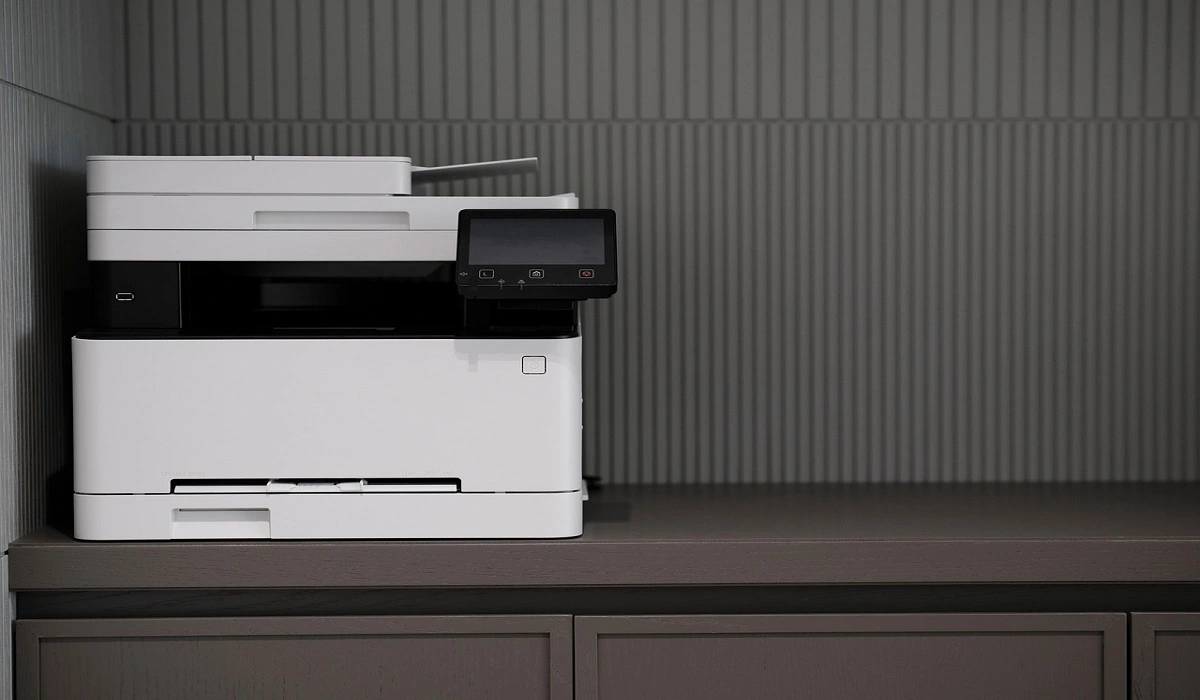How to Handle Android Studio Installation in Windows 11/10?
Introduction
Windows operating systems come with many high-quality software configurations, some pre-built for Windows OS while some not. One notable software is Android Studio, which is highly related to Android app development. It comes equipped with many tools and features necessary for creating robust Android apps.
You can download and do Android Studio setup in Windows 10/11, but it can take some complex configuration steps to complete. Yet, you can do the installation if you carefully take the right steps.
What is Android Studio?
Running with IntelliJ IDEA (JetBrains), Android Studio is a notable IDE, mainly related to Android app development. It includes various features that coding experts utilize for development projects, like a blended environment, a flexible build system (Grade-centric), etc.
There is a feature-rich emulator here for coding work, NDK/C++ support, and built-in integration of the Google Cloud Platform.
System Requirements:
The following are the main system requirements you should know about before beginning the Android Studio setup in Windows.
- System compatibility- Windows 11/10/8/7
- Disk Space- Available disk space of 2-4 GB, Recommended 12 GB (at least 1.5 GB for Android Emulator/Android SDK + 500 for IDEA).
- RAM- Minimum 4 GB RAM, Recommended 8 GB RAM (Additional 1 GB RAM for Android Emulator)
- Screen Resolution- Minimum 1280 x 800
- CPU specifications- 2nd or higher Intel Core Processor, x86_64 CPU architecture, or AMD CPU + Hypervisor Support
Process of Android Studio Installation in Windows 11/10
After checking if the system requirements for the installation of Android Studio are compatible, you can begin the process. For that, there are different sequences you should learn about and follow carefully. We studied and broke down all of these methods.
Stage 1: Download/Install Java JDK
Before beginning the installation of Android Studio, you need to prepare the Java environment on your Windows 11/10 device. So, the first step involves installing and setting up Java JDK (Java Development Kit).
This is highly important as a development package that users operate to build Java-centric apps. Besides that, developers can use this package for Java-based app code testing. So, first, one should download it on their Windows 11 or 10 system.
How to do this?
Step 1: Visit the Oracle Java official website for downloads.
Step 2: Search and select the most recent Java JDK version from the given list. Under the Windows section, download its x64 MSI Installer option.
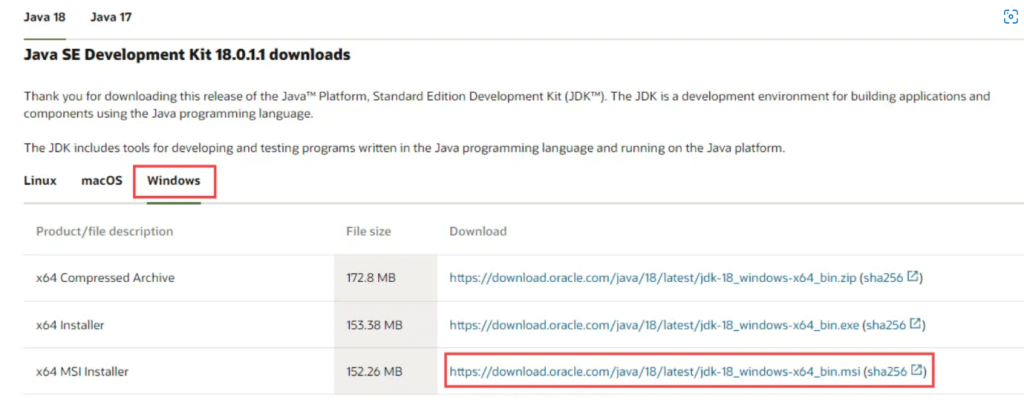
Step 3: After downloading it, access the Downloads section and open the file you received.
Step 4: Then, read through the on-screen instructions that come up and install the JDK.
Stage 2: Set up Java JDK Environment
During the Android Studio setup in the Windows process, you should kickstart the Java environment setup first after the installation of the Java JDK completes successfully. Follow the steps carefully to do this process. The Android Studio software would access the Java environment to operate securely later.
To note, there is no need to reconfigure Environmental Variables during this process if they are already done. For first-time users, doing the steps are important to decrease multiple coding errors and issues during compilation.
How to do this?
Step 1: Access the Windows search field through the given icon and type in the phrase- Edit Environment variables. Hit Enter to access this feature.

Step 2: Find and choose the Environmental Variables button. Press it.

Step 3: In the next window that appears, find the “System Variables” portion in the lower part of the window. Then, click on Path > Edit > New.

Step 4: Next, copy the folder path for the JKD binaries specifically on your device. Here is an example: C:\Program Files\Java\jdk-18.0.1.1\bin.
Step 5: Go back to the tab for Environmental Variables. Here, paste the copied path and save.
Step 6: Then, click on the User Variables section, and press the New button.
Step 7: Under the box for a variable name that appears, type in PATH_HOME. Under the box for variable value, add the path you added.
Step 8: Click on the OK button to complete the process.
Stage 3: Download and Install Android Studio
Next, you can begin the installation of Android Studio on your device. The process for this is the same for Windows 11 and 10, but there may be some variations depending on device and model differences.
How to do this?
Step 1: Download the developer’s Android Studio zip file or executable version.
Step 2: Press the Download button.
Step 3: On the next slide, click the checkbox for the “I have read and agree with the above terms and conditions” option.

Step 4: When the next prompt box appears, click the “Save File” option. This will start the file downloading process.
Step 5: Then, access the Downloads section to access this file. Click on it to run the software and begin the installation process.
Step 6: After the installation completes, you should click the “Next” button to proceed.
Step 7: In the following window that appears, click Finish.
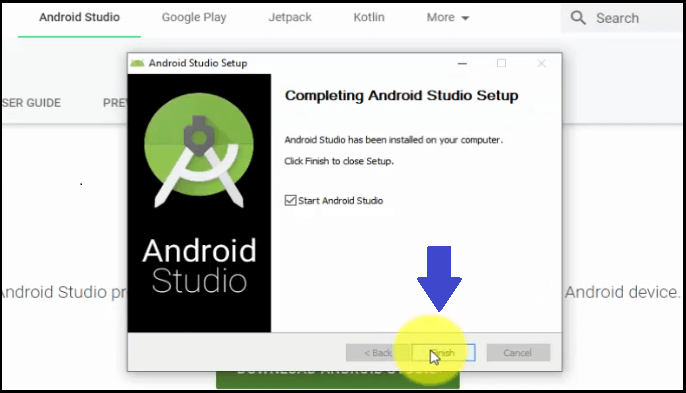
Step 8: The system would then ask the user if they want to import previous Android Studio settings if they downloaded the software before. For best results, click the “Do not Import Settings” choice.
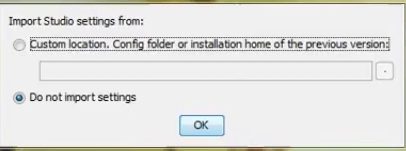
Step 9: Press OK.
Step 10: The Android Studio software would start up and then search for any present SDK Components in the system.
Step 11: After the software finds the necessary SDK components, you will get redirected toward the Welcome dialog box.

Step 12: Press the Next button.
Step 13: The Install Type window will appear. Here, select the Standard option and press Next.
Step 14: After that, you have to choose the preferred UI Theme. Two options are available- Darcula (Dark theme) and IntelliJ (Light theme).

Make your choice, and then click on the Next button.
Step 15: The next window will show the available SDK Components to download. Press the Finish button to start the downloading process of each. This can take some time to complete the full process, typically around 15 to 30 minutes.
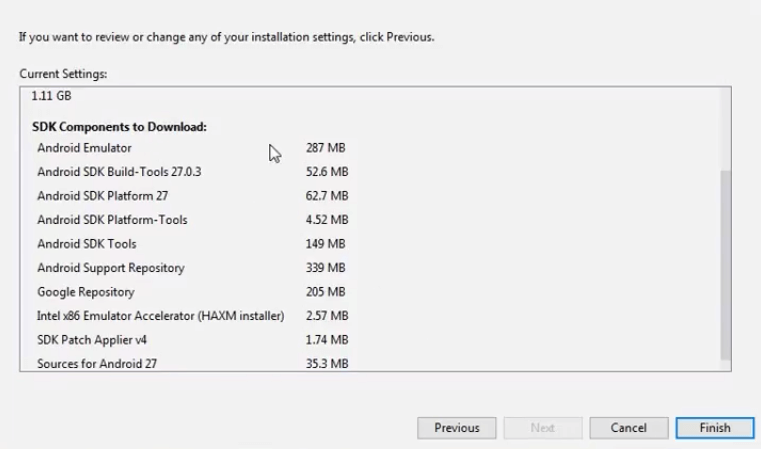
Step 16: After the configuring of Android Studio is complete; you can use it to create new apps.
Step 17: To begin, click on the “Start a new Android Studio project” option.
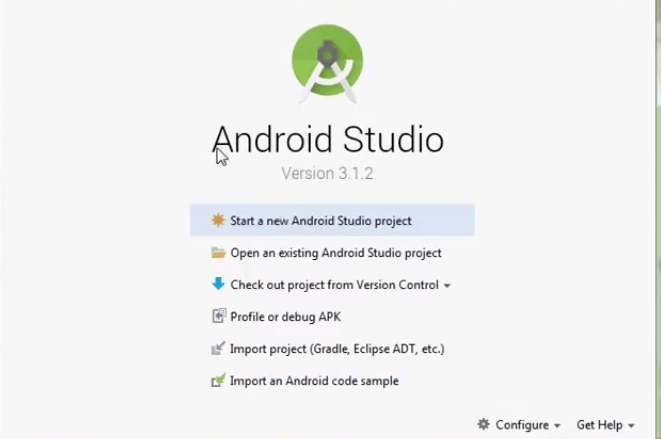
Conclusion
On Windows 10 or 11, you can install Android Studio suitably for Android app development work. Before that, you have to install and set up the Java JDK in the device since that will allow the software to operate appropriately. Follow all of the steps for the Android Studio installation and setup process cautiously, and customize the app theme.
If you found this post enlightening about the topic you were searching for, there are more such guides we have published. Read through them if interested, and let us know your thoughts.
Popular Post
Recent Post
Troubleshooting Headphone Detection: Headphones Not Detected/Working
A lot of users run into sound problems at some point. A common one is when the computer does not pick up the headphones. You plug them in, but the speakers keep playing. This can break your focus during work, movies, music, or calls. It also causes confusion because the reason is not always clear […]
How To Re-Pair Bluetooth Earbuds For Stereo Sound on Windows
Wireless earbuds are often paired with computers for rich stereo sound, but things don’t always go smoothly. Sometimes, the system defaults to mono audio or fails to activate the correct playback mode. This can disrupt music, calls, or gaming, making the sound feel flat and lifeless. These glitches usually stem from improper setup. Windows might […]
How To Manage Camera Permissions for App On Windows: Complete Guide [2026]
Many users run into issues when trying to join video calls or online meetings—their camera simply won’t turn on. This can happen for a few reasons: Windows might be blocking access, or the app may not have the correct permissions. These hiccups often lead to confusion and frustration. Fortunately, Windows provides straightforward tools to help […]
Help With Color Management In Windows: Complete Guide [2026]
Color often decides how we experience a picture, a video, a website, or even a simple chart. Many users feel confused when colors look different on each screen. A monitor may show a softer shade while a laptop shows a sharper one. This creates doubt and slows down work. It can also lead to mistakes […]
How To Install Pending Windows Updates Easily On Windows 11
Windows updates keep your computer healthy. They fix problems and improve security. Many people ignore updates because they worry about errors or slow performance. In most cases, the process is simple. You only need to follow a clear routine and give your computer enough time to finish the job. A regular update habit saves you […]
How to Set Up a Secure VPN Connection on Windows In 2026
A VPN helps protect your privacy each time you go online. It hides your real location. It protects your data from unsafe networks. It also keeps your browsing away from unwanted eyes. Many people use it to keep their work safe. Others use it to guard their regular internet use. Windows offers good support for […]
How To Extend Your Battery Life Effectively in Windows
A laptop is useful only when the battery lasts long enough to support your work. When the charge falls too fast, even small tasks feel stressful. You may rush to find a charger. You may feel forced to lower the performance. You may even stop your work in the middle of something important. This can […]
How To Get Help With Notepad in Windows [2026]
Notepad has been part of Windows for many years. And people still use it for quick notes, lists, and simple edits. Its clean layout helps new users, while its small set of tools supports everyday tasks. Yet problems can appear when features behave in unexpected ways or when users try something new, so clear guidance […]
Software Performance Optimization Tips: Complete Guide
Software often slows down over time, turning once-fast programs into frustrating delays. While many assume their device is outdated, the real issue often lies in how the software runs. With a few simple habits and checks, users can restore speed and avoid costly upgrades. This guide offers clear, beginner-friendly software performance optimization tips. It covers […]
How To Connect a Scanner to Your Device Windows 11 In 2026
Have you ever needed to scan a document in a hurry and did not know how to begin? Many people face this problem when they buy a new scanner or a new computer. Windows 11 includes helpful tools that make the process easy, but you must know the right steps. This guide explains each method […]


















![Help With Color Management In Windows Complete Guide [2026]](https://www.techcommuters.com/wp-content/uploads/2025/12/Help-With-Color-Management-In-Windows-Complete-Guide.webp)
